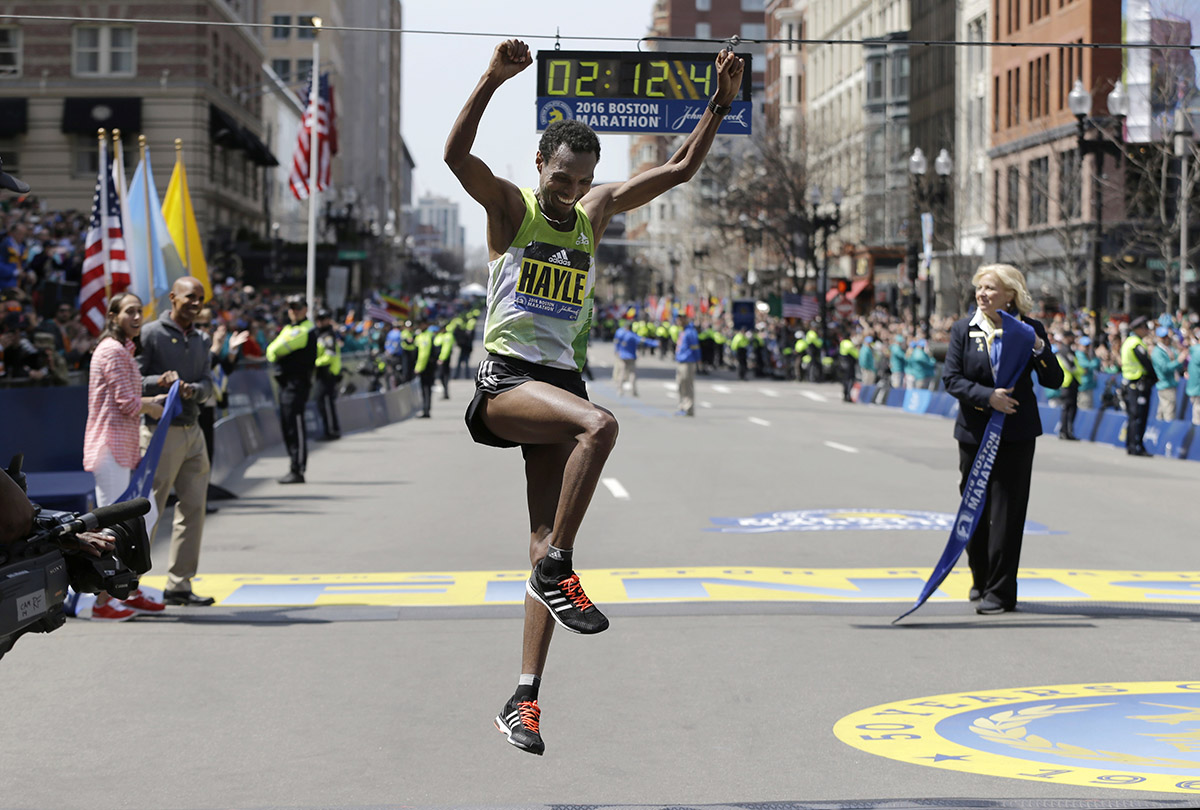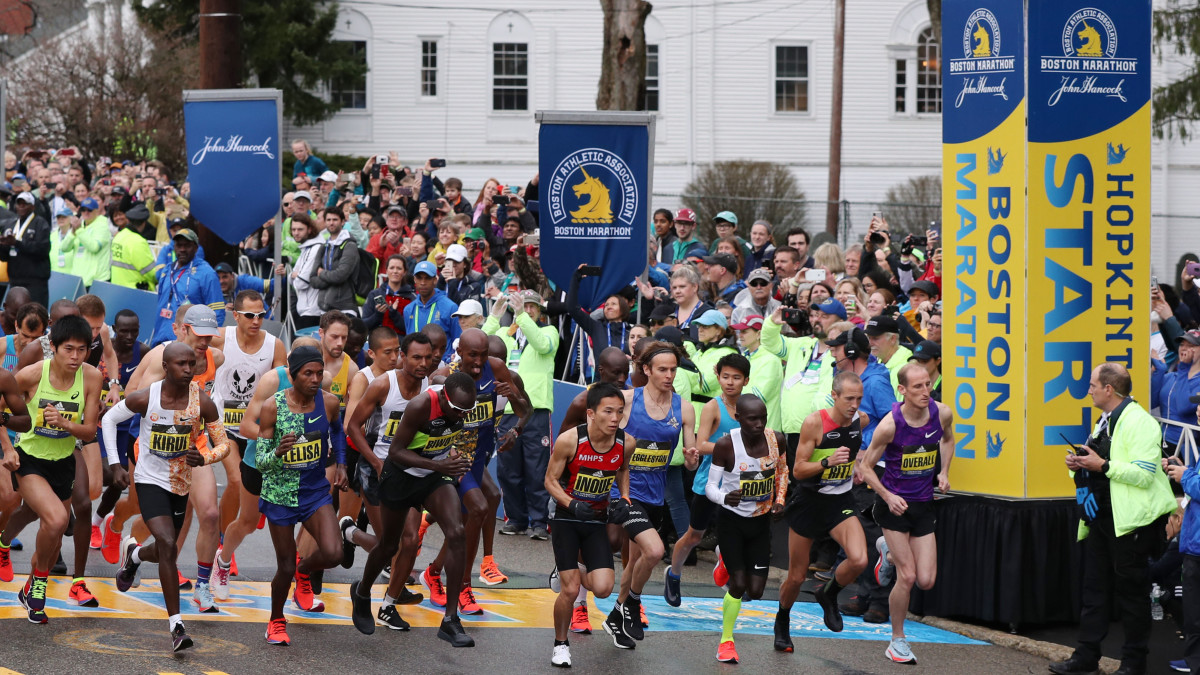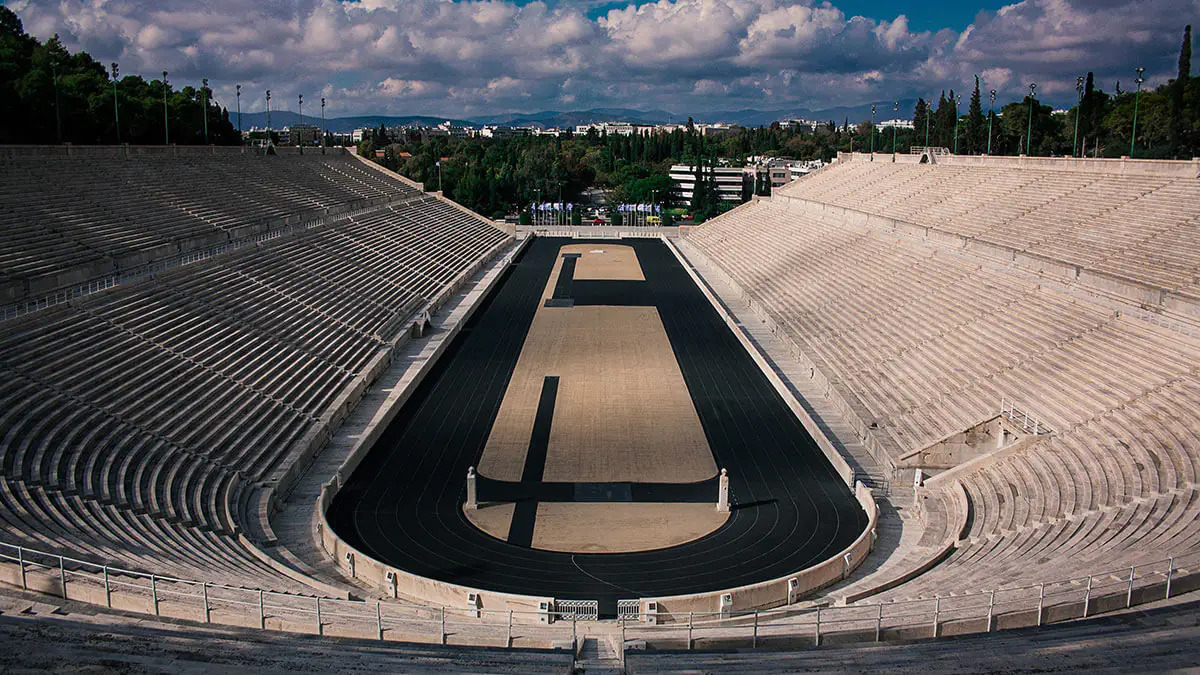

Featured
Who Won The Battle Of Marathon?
Published: August 12, 2023
Discover who emerged victorious in the epic Battle of Marathon, as we delve into the history and tactics of this pivotal clash. Be captivated by the story of the battle that shaped the destiny of ancient Greece.
Introduction
The Battle of Marathon is one of the most renowned conflicts in ancient history, a pivotal event that shaped the course of Western civilization. Fought in 490 BC between the Persian Empire and the city-state of Athens, it was a battle that tested the mettle of both sides and had far-reaching consequences.
At its core, the Battle of Marathon represented the clash between East and West, tyranny and democracy, oppression and freedom. It has become a symbol of bravery, resilience, and the indomitable spirit of the Greek people. The battle is often cited as a turning point in the Greco-Persian Wars, setting the stage for future conflicts and eventually leading to the rise of Athens as a dominant power in the ancient world.
The origins of the Battle of Marathon can be traced back to the Ionian Revolt, a series of uprisings against Persian rule in the 5th century BC. The Ionian city-states, including Athens and Eretria, provided support to the rebels, prompting a vengeful response from the Persian Emperor Darius I. With a massive fleet and army, Darius sought to quell the rebellion and punish Athens for its defiance.
Anticipating the Persian invasion, Athens took steps to prepare its defenses. The Athenian general Miltiades, renowned for his military acumen, lobbied for a decisive confrontation with the Persians on the plain of Marathon. His plan was to engage the enemy before they could fully assemble their forces and leverage the superior Athenian hoplite infantry.
With tensions mounting and the Persian army amassing, the Battle of Marathon marked a pivotal moment. Both sides recognized the significance of the outcome, knowing that victory or defeat would have profound implications. The battle would not only determine the fate of Athens but also shape the course of history for generations to come.
Background of the Battle of Marathon
The roots of the Battle of Marathon can be traced back to the longstanding animosity between the Persian Empire and the Greek city-states. For centuries, the Persians had sought to expand their territorial dominance, while the Greek city-states fiercely defended their independence and democratic principles.
In 499 BC, the Ionian city-states in Asia Minor, under Persian rule, staged a revolt against their oppressors, with support from Athens and Eretria. The Persian Emperor Darius I swore revenge and sought to quell the rebellion. The Ionian Revolt marked the beginning of a larger conflict known as the Greco-Persian Wars.
As the Persians crushed the rebellion and restored control over the Ionian city-states, they turned their attention to Athens and Eretria. Darius planned a punitive expedition against these cities, aiming to make an example of them to discourage further resistance.
Athens, aware of the impending Persian invasion, sought alliances with other Greek city-states and embarked on a vigorous military buildup. They sent envoys to seek aid from Sparta, famed for its military prowess and leadership. However, due to religious obligations, the Spartans were unable to assist until the end of the upcoming festival of Carneia.
Inspired by the victories of the Ionian city-states and determined to confront the Persians head-on, Athens turned to the strategic brilliance of Miltiades. Miltiades was an experienced general and Athenian statesman who had previously served in the Persian court but later defected to Athens.
Miltiades rallied other city-states, including Plataea and Messenia, to join forces with Athens in the battle against the Persians. The Greeks started preparations by fortifying the city walls and gathering their strongest warriors – the hoplites. These heavily armed infantry soldiers formed the backbone of the Greek army and were renowned for their discipline and phalanx formation.
In 490 BC, the Persian fleet, comprising hundreds of ships and carrying a massive army, reached the shores of Marathon, a plain just northeast of Athens. It was here that the fate of Greece would be decided.
With the Persians poised for invasion and the Greek city-states united in their resolve, the stage was set for the legendary Battle of Marathon – a clash that would test the courage and tenacity of the Greek warriors against overwhelming odds.
Key players in the Battle of Marathon
The Battle of Marathon involved several key players who played crucial roles in shaping the outcome of the conflict. These individuals displayed strategic prowess, military leadership, and unwavering determination in the face of adversity.
1. Miltiades: Miltiades was the Athenian general who led the Greek forces at the Battle of Marathon. He was a seasoned military strategist and a skilled tactician. Miltiades successfully convinced the Athenians to reject a defensive strategy and urged them to engage the Persians in a decisive battle on the plain of Marathon. His leadership and boldness were instrumental in the eventual Greek victory.
2. Callimachus: Callimachus was the Polemarch, the second-highest military commander, in the Athenian army. While Miltiades led the Greeks in battle, Callimachus provided crucial support and served as a stabilizing force within the Athenian ranks. His collaboration with Miltiades in the planning and execution of the battle was pivotal to the Greek success.
3. Datis: Datis was a Persian general appointed by Emperor Darius I to lead the invasion of Greece. He commanded a formidable force consisting of Persian infantry, cavalry, and archers. Datis was known for his tactical expertise, but he underestimated the Greek hoplites and their ability to withstand the Persian assault.
4. Artaphernes: Artaphernes was the brother of Darius I and acted as his advisor in the Persian court. He played a significant role in the decision-making process leading up to the Battle of Marathon. Artaphernes provided strategic guidance to Datis and was responsible for coordinating the Persian army’s movements and objectives.
5. The Greek Hoplites: The hoplites formed the backbone of the Greek army and were vital to the Athenian defense at Marathon. These heavily armored infantry soldiers fought in close formation called the phalanx, which provided them with superior defensive capabilities. Their disciplined and unified approach proved crucial in repelling the Persian attacks.
6. The Persian Infantry: The Persian infantry made up the bulk of the Persian army at Marathon. They were well-trained soldiers equipped with bows, spears, and swords. Although formidable, their tactics and weaponry were ill-suited to the Greek hoplite formation, which heavily relied on shields and close combat.
While the Battle of Marathon was ultimately won by the Greeks, it was the leadership, strategy, and skill of these key figures that played a pivotal role in shaping the outcome of the conflict. Their contributions and decisions on the battlefield would leave a lasting mark on ancient history.
Events and Strategies Leading up to the Battle
The events and strategies leading up to the Battle of Marathon were crucial in shaping the outcome of the conflict. Both the Persians and the Greeks employed various tactics and maneuvers as they prepared for the decisive clash on the plains of Marathon.
After the Ionian Revolt, the Persian Emperor Darius I sought to punish Athens and Eretria for supporting the rebellious Ionian city-states. With a massive fleet and army at his disposal, Darius set his sights on the Greek mainland.
Athens, aware of the impending Persian invasion, began fortifying the city walls and rallying the support of other Greek city-states. They sent messengers, known as heralds, to request assistance from Sparta, the renowned military power of ancient Greece. However, due to religious obligations, the Spartans were unable to provide immediate aid.
Miltiades, an Athenian general and defector from the Persians, urged the Athenian leaders to reject a defensive strategy and instead engage the Persians in a battle at Marathon. Miltiades argued that a decisive victory would not only safeguard Athens but also undermine Persian confidence and hinder their future ambitions.
The Athenians, convinced by Miltiades’ arguments, prepared to face the Persian invasion. They sent their heralds to request reinforcements from other Greek city-states, most notably from the city of Plataea. The Plataeans agreed to provide aid and joined forces with Athens.
Athens and its allies deployed their forces at Marathon, a small coastal plain northeast of Athens. They positioned their troops strategically, maximizing their advantage on the battlefield. The center of the Greek line consisted of the best-trained soldiers and the most heavily armed hoplites, while the flanks were guarded by lighter troops.
Meanwhile, Darius and his general, Datis, landed their Persian army at Marathon. The Persians had a numerical advantage, with a vast force of infantry, cavalry, and archers. However, their lack of familiarity with the Greek terrain and battle tactics would prove to be a significant disadvantage.
As the Persian forces encamped at Marathon, tension built between the two armies. Miltiades recognized that a swift and decisive attack would catch the Persians off guard and disrupt their preparations. After seeking counsel from his fellow generals, Miltiades made the audacious decision to initiate the attack the next day.
The night before the battle, Miltiades devised a plan to exploit a weak point in the Persian line. He instructed his troops to focus their efforts on the Persian center, aiming to break through and encircle the enemy. The Greek hoplites were well-trained in the use of the phalanx formation, providing them with a formidable defense and offensive capability.
With the stage set and both sides prepared, the Battle of Marathon was about to commence. The events and strategies leading up to this monumental clash would shape the fate of Greece and reverberate throughout history.
The Battle Unfolds: Tactics and Maneuvers Used
The Battle of Marathon was a clash of skill, strategy, and courage as both the Greek and Persian forces employed various tactics and maneuvers to gain the upper hand on the battlefield.
As the battle commenced, the Persian forces, with their numerical advantage, sought to overwhelm the Greek lines. They launched wave after wave of infantry and cavalry attacks, using their superior numbers to try and break the resolve of the Greek hoplites who stood defiantly in their phalanx formation.
The Greek hoplites, led by Miltiades, were strategically positioned in a strong defensive formation that played a crucial role in their success. They formed a solid wall of overlapping shields, creating a formidable barrier against the Persian assaults. The hoplites used their long spears to repel the enemy and maintain the integrity of the phalanx formation.
As the Persian attacks intensified, the Greek center, under the command of Miltiades, launched a daring maneuver. Recognizing a weakness in the Persian center, Miltiades ordered a concentrated thrust to break through their lines. The Greek hoplites advanced with disciplined precision, striking the Persian soldiers with their spears and shields.
The Persian center struggled to withstand the determined assault, and panic started to spread within their ranks. Sensing the vulnerability, the Greek flanks moved in, encircling the disoriented Persians and heightening the chaos on the battlefield. The Greek hoplites fought with remarkable bravery and determination, demonstrating their superior tactics and skill.
Despite their advantageous position, the Greeks faced significant challenges throughout the battle. The heavily armored hoplites, while effective in close combat, struggled to contend with the speed and mobility of the Persian cavalry. The Greek flanks were particularly vulnerable to the Persian cavalry charges, forcing them to constantly adapt their tactics to counter this threat.
As the battle raged on, the Greek forces maintained their resilience and momentum. The Persian army, demoralized by the relentless Greek assault, began to collapse under the pressure. Many Persians were driven into the marshes and drowned, unable to escape the Greek onslaught.
In the end, the Greek triumphed in the Battle of Marathon. Their mastery of defensive formations, decisive use of the phalanx, and strategic maneuvering played pivotal roles in their ultimate victory. The battle showcased the prowess and discipline of the Greek hoplites, who overcame overwhelming odds to secure a historic triumph against the Persian invaders.
The tactics and maneuvers employed by both sides in the Battle of Marathon highlight the importance of strategy and adaptability in warfare. The Greeks’ ability to exploit weaknesses in the Persian formation, maintain their cohesion in the face of fierce enemy attacks, and seize the opportunity to encircle and overwhelm the enemy demonstrates the art of effective military engagement.
Outcome of the Battle of Marathon
The Battle of Marathon concluded with a resounding victory for the Greek city-states, particularly Athens. The outcome had significant repercussions that reverberated throughout ancient history.
The Greeks, led by Miltiades, demonstrated exceptional bravery, strategic prowess, and unity on the battlefield. Against overwhelming odds, they successfully repelled the Persian invasion and emerged victorious. This decisive Greek triumph shattered the myth of Persian invincibility and dealt a severe blow to the aspirations of the Persian Empire.
The Persian losses were significant. The Greek hoplites inflicted heavy casualties upon the Persian ranks, dealing a severe blow to their forces. It is estimated that around 6,400 Persians perished in the battle, compared to just 192 Greeks. This stark imbalance demonstrated the effectiveness of the Greek tactics and the determination of their warriors.
The victory at Marathon had far-reaching implications. It not only preserved the sovereignty of Athens but also bolstered the morale and confidence of the Greek city-states. The Greeks realized that they were capable of standing up to the mighty Persian Empire and successfully defending their freedom.
Furthermore, the Battle of Marathon set a precedent for future victories and further conflicts between the Greeks and Persians. It served as a rallying cry for other Greek city-states, inspiring them to resist Persian aggression and seek alliance and unity in the face of a common enemy.
In recognition of their heroics, the Athenians sent a runner named Pheidippides to deliver the news of their victory to Athens. Pheidippides ran the approximately 26 miles from Marathon to Athens, delivering the message of triumph before collapsing from exhaustion. This heroic feat gave birth to the modern-day marathon race, an enduring symbol of endurance and determination.
The Battle of Marathon marked a pivotal moment in Greek history. It solidified the power and influence of Athens, establishing it as a dominant force in the region. The victory not only instilled a sense of pride and unity among the Athenians but also drove them towards further advancements in democracy, art, philosophy, and literature.
However, it is essential to note that while the Greeks emerged victorious in the Battle of Marathon, the war was far from over. The Greco-Persian Wars would continue for decades, with further conflicts and battles shaping the course of history.
Nevertheless, the outcome of the Battle of Marathon remains a testament to the indomitable spirit of the Greek people and their ability to achieve greatness through strategic thinking, bravery, and unified action.
Historical Significance and Aftermath of the Battle
The Battle of Marathon holds immense historical significance and its repercussions extended far beyond the battlefield. The victory of the Greek city-states over the Persian Empire had profound consequences that shaped the course of ancient history.
First and foremost, the Battle of Marathon elevated the status of Athens and solidified its position as a dominant power in the region. The triumph against the mighty Persian Empire boosted the confidence of the Athenians and bolstered their belief in their democratic principles and military capabilities.
The victory at Marathon also reinforced the notion of Greek exceptionalism and their belief in their cultural and political superiority. It fostered a sense of unity among the Greek city-states and encouraged them to stand together in the face of common threats.
Furthermore, the Battle of Marathon proved to be a turning point in the Greco-Persian Wars. The Greek victory at Marathon acted as a prelude to future victories, such as the Battle of Salamis and the Battle of Plataea, which ultimately led to the defeat of the Persian Empire and the preservation of Greek independence.
Additionally, the success at Marathon inspired other Greek city-states to resist Persian aggression. It served as a rallying cry for those who sought to defend their freedom and protect their democratic ideals. With Athens leading the charge, the Greeks formed alliances and coalitions, continuing the fight against the Persians throughout the subsequent years.
The Battle of Marathon also had a lasting impact on warfare and military strategy. The success of the heavily armored Greek hoplites and their phalanx formation reverberated throughout the ancient world. Other civilizations sought to emulate the discipline and tactics displayed by the Greeks, influencing military thinking and tactics for centuries to come.
Moreover, the Battle of Marathon established a legacy that reached beyond military exploits. The famous run of Pheidippides, the Athenian messenger, inspired the modern-day marathon race. The marathon has become a symbol of endurance, determination, and the human spirit, commemorating the heroic feat of delivering the momentous news of victory to Athens.
From a broader perspective, the Battle of Marathon marked a struggle between opposing forces and ideologies. It represented a clash between Eastern despotism and Western democracy, tyranny and freedom. The significance of the battle lies in the courageous stand of the Greeks against overwhelming odds, defending their values and principles against a formidable foe.
The Battle of Marathon stands as a pivotal moment in ancient history, showcasing the resilience, ingenuity, and courage of the Greek city-states. Its historical significance extends beyond the immediate aftermath, leaving a lasting legacy in the realms of politics, military strategy, and the human spirit.
Controversies and Debates Surrounding the Victor
The Battle of Marathon, despite its historic significance, has not been immune to controversies and debates surrounding the true victor of the conflict. Some sources and historical accounts have raised questions and alternative theories regarding the outcome of the battle.
One of the primary controversies revolves around the identification of the true victor. While the prevailing view is that the Greeks emerged victorious, there are alternative interpretations that suggest a different outcome. Some historians argue that the Persians, despite their heavy losses, could be viewed as the victors because they successfully managed to retreat from the battlefield relatively intact. This perspective emphasizes the broader context of the Greco-Persian Wars and highlights the long-term impact of the Persian Empire.
An additional point of contention lies in the role played by the Athenian general Miltiades. While Miltiades is commonly credited with leading the Greeks to victory, some historians argue that his command decisions were rash and reckless. They suggest that a different Athenian general, Callimachus, was mainly responsible for the successful outcome of the battle. These debates reflect the challenges of piecing together historical events and attributing credit accurately.
Another contentious aspect is the level of involvement and significance of the other Greek city-states in the battle. While the Athenians often take center stage in the narrative, it is important to recognize the contributions of the Plataeans and other allies who fought alongside Athens. Some argue that minimizing their role diminishes the collective effort of the Greek city-states, leading to debates about the inclusive nature of the victory.
Debates also exist regarding the strategic aspects of the battle. Some historians question whether the Greeks were truly outnumbered by the Persians, challenging the popular notion of overwhelming numerical superiority. These alternative interpretations suggest that the Greek advantage in tactics and discipline contributed significantly to their victory, challenging the conventional understanding of the battle’s dynamics.
It is important to acknowledge that historical events are often subject to interpretation and debate, particularly as more evidence and diverse perspectives come to light. The controversies surrounding the victor of the Battle of Marathon highlight the complexity of historical analysis and the challenges of uncovering the truth amidst differing accounts.
Ultimately, the controversies and debates surrounding the victor of the Battle of Marathon serve as a reminder of the ever-evolving nature of historical understanding. They spark further inquiry, promote critical analysis, and enrich our understanding of this pivotal event in ancient history.
Conclusion
The Battle of Marathon holds an enduring place in history as a seminal event that shaped the destiny of ancient Greece. It marked a significant victory for the Greek city-states, particularly Athens, against the mighty Persian Empire. The battle showcased the strategic brilliance, unwavering determination, and heroism of the Greek hoplites, who defended their freedom and democratic ideals against overwhelming odds.
The outcome of the Battle of Marathon had profound and far-reaching consequences. It boosted the morale and confidence of the Greeks, uniting them in the face of common threats and inspiring future resistance against Persian aggression. The triumph at Marathon set the stage for subsequent Greek victories in the Greco-Persian Wars and ensured the preservation of Greek independence and democratic principles.
The battle also left a lasting impact on military strategy and tactics. The discipline and cohesion displayed by the Greek hoplites, along with their employment of the phalanx formation, influenced warfare for generations to come. The tactics used at Marathon continue to be studied and admired as a testament to the effectiveness of well-trained infantry and strategic maneuvering.
However, the Battle of Marathon is not without its controversies and debates. Historians continue to question aspects such as the identification of the true victor, the role of individual leaders, and the extent of the involvement of various Greek city-states. These ongoing discussions reflect the complexity of understanding historical events and the multiplicity of perspectives.
Regardless of the controversies, the Battle of Marathon remains a powerful symbol of bravery, resilience, and the indomitable spirit of the Greek people. It holds a special place in the annals of history, reminding us of the transformative power of decisive battles and the lasting impact they can have on culture, politics, and the human spirit.
The legacy of the Battle of Marathon lives on, not only as a pivotal moment in ancient history but as a source of inspiration for endurance and determination. From the heroic run of Pheidippides to the modern-day marathon race, the battle continues to captivate the imagination and serves as a testament to the timeless pursuit of human achievement.









